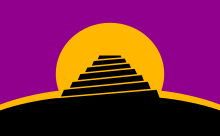User:LesVisages
|
 |
Language of the DayTsolyáni is one of several languages invented by M. A. R. Barker, developed in the mid-to-late 1940s in parallel with his legendarium leading to the world of Tékumel as described in the Empire of the Petal Throne roleplaying game, published by TSR in 1975. It was the first constructed language ever published as part of a role-playing game and draws its inspiration from Urdu, Pashto, Mayan and Nahuatl. The last influence can be seen in the inclusion of the sounds hl [ɬ] and tl [tɬ]. One exact borrowing from a real-world source is the Tsolyáni noun root sákbe, referring to the fortified highways of the Five Empires; it is the same word as the Yucatec Maya sacbe, referring to the raised paved roads constructed by the pre-Columbian Maya. Another close borrowing is from the Nahuatl word tlatoani, referring to a leader of an Aztec state (e.g. Montezuma); it is similar to the clan-name of the Tsolyáni emperors, Tlakotáni. Tsolyáni is written in an offshoot of the Engsvanyáli script which was developed by Barker in parallel with the language, being very close to its modern-day form by 1950. It is read from right-to-left and is constructed like the Arabic script. The consonants each have 4 different forms: isolate, initial, medial, and final; the 6 vowels and 3 diphthongs each only have an independent initial form, while diacritical marks are used for medial and final vowels. Find out more... |
Did you know......that the Klingon language, used in the Star Trek films and television series is a fully formed language developed by linguist Marc Okrand? |
Did you know...
From Wikipedia's "Did You Know" archives:

- ... that the world's largest mathematical experiment, designed by Brian Butterworth, found women to be faster than men at subitizing?
- ... that Khmer numerals were the first material evidence of the figure zero as a numerical figure?
- ... that in the English plural, the letter -s is pronounced differently in words like "cats", "cabs", and "buses", because of a phonological rule?
- ...that the 2005 movie The Interpreter by film director Sydney Pollack was based on real-life conference interpreters from the United Nations Interpretation Service?
- ... that Samuel Taylor Coleridge spelled William Shakespeare's last name as "Shakspere"?
